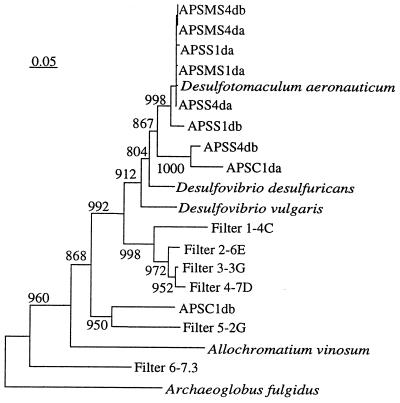FIG. 5.
Phylogenetic placement of APS reductase sequences from intestinal and environmental samples. The archaeal sequence (Archaeoglobus fulgidus) was used as the outgroup for rooting the tree. Numbers above each node are confidence levels generated from 1,000 bootstrap trees (8). The scale bar is in fixed nucleotide substitutions per sequence position. Intestinal APS reductase sequences are amplicons from clones (a and b) from the stomach (APSS1da and APSS1db), middle SI (APSMS1da), and cecum (APSC1da and APSC1db) of a 1-day-old mouse and from the stomach (APSMS4da and APSS4db) and middle SI (APSMS4da and APSMS4db) of a 4-day-old mouse. Filters 1-4C, 2-6E, 3-3G, 4-7D, 5-2G, and 6-7.3 represent APS reductase amplicons from six clones from the biofilm of the water filter.

